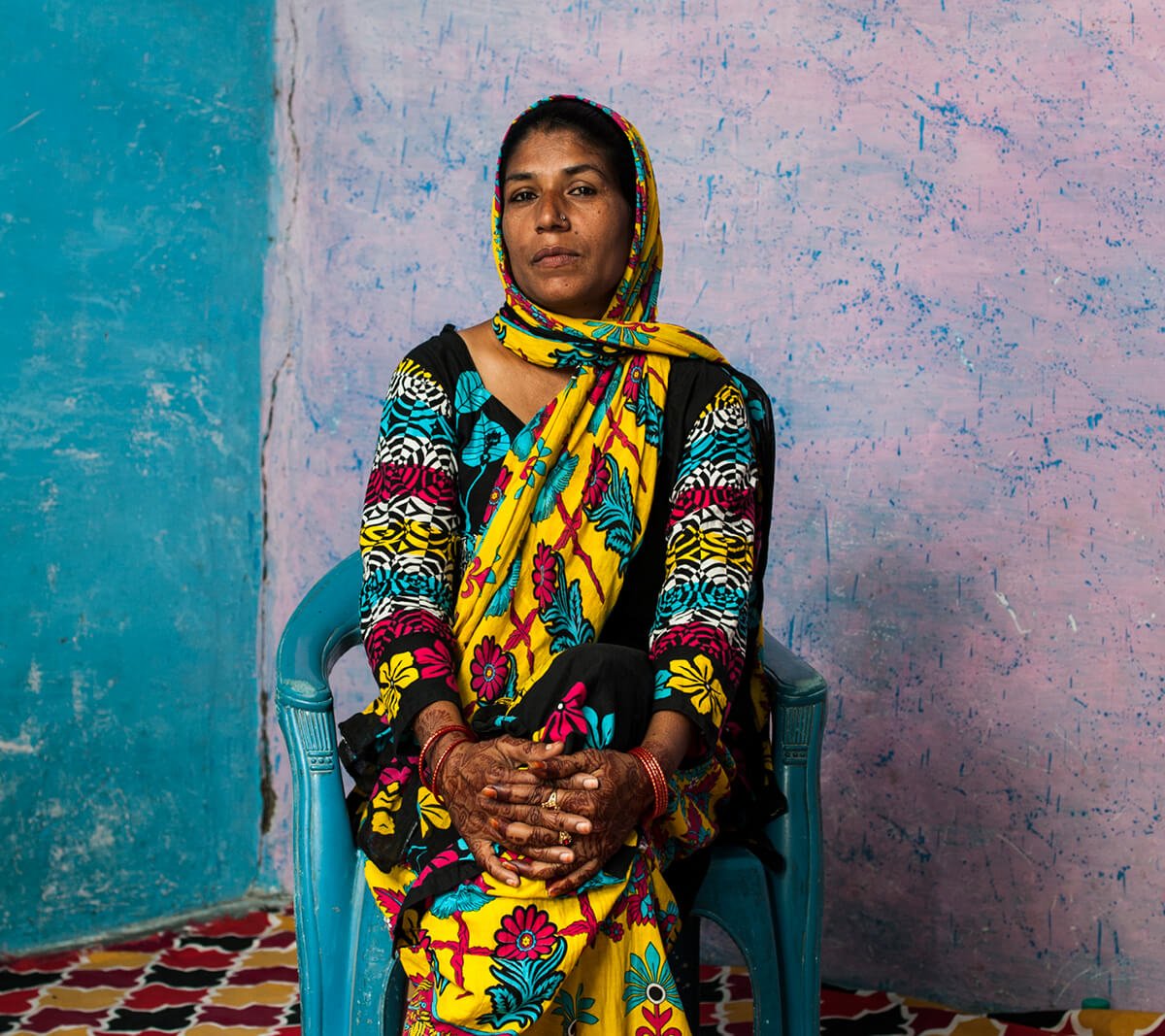INTERVIEW
Strength and Dignity in Injustice
WITH FRANCESCA MOORE
An interview with Francesca Moore
“My great grandmother’s brother was a photographer and had a studio in Genova, Italy, in the 1920s… Portraits at this time documented people of status and power, a kind of validity. I wanted to represent these women activist survivors in a similar way”
Francesca Moore won our May 2020 theme – COLORS – with a beguiling portrait of Sarita Malivi, a survivor of the Bhopal gas disaster and one of the activists campaigning for justice. It is of course an image rich with vibrant color, but that energy is in contrast to her expression. Head slightly bowed and gaze averted from Francesca’s lens, she has a charisma but is detached from the moment – her thoughts elsewhere. It is perhaps just a glimpse into the weight of the tragedy that has consumed her life for almost forty years, and that has been the focus of Francesca’s for almost a decade.
We put some questions to Francesca to understand more about her work, the rationale for creating it, and where things stand for Sarita and her fellow Bhopalites after all this time…
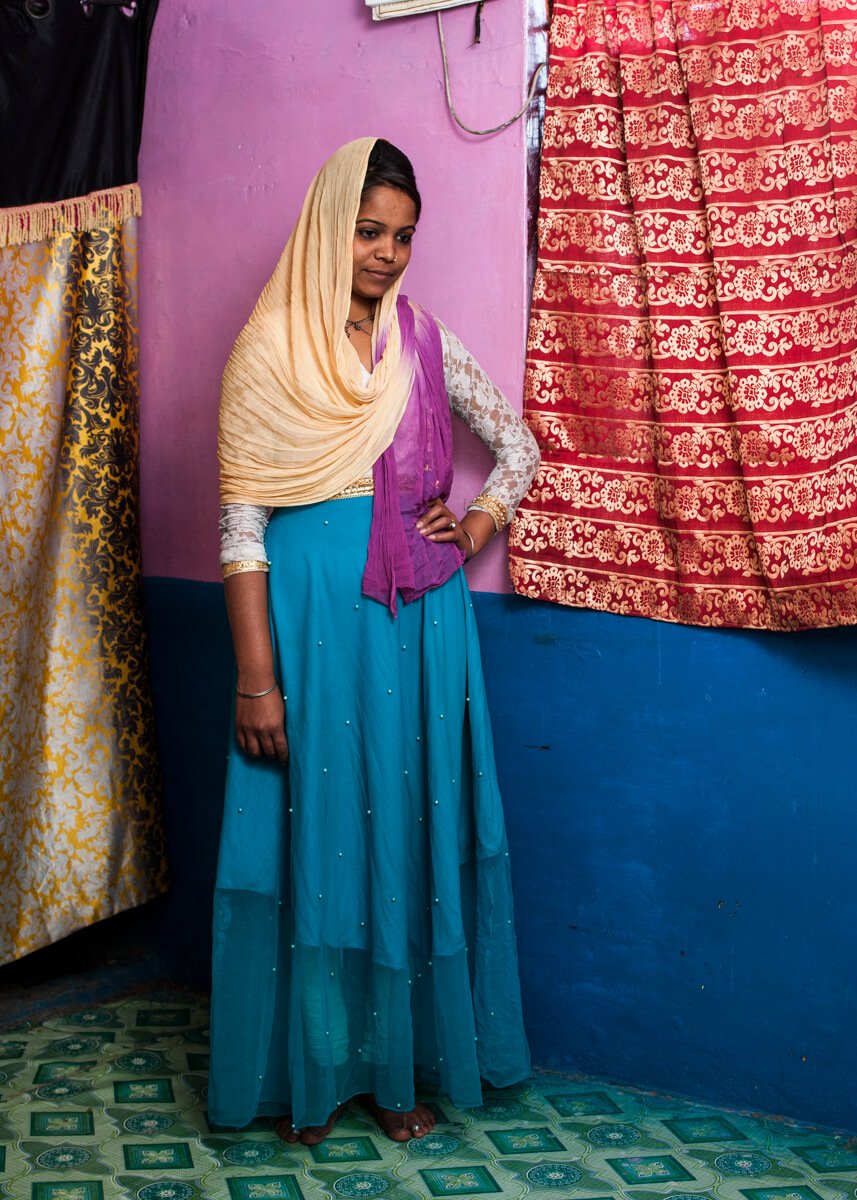
Francesca’s winning image
“On December 2, 1984, the air in Bhopal, India enveloped its residents in forty tons of toxic Methyl Isocyanate gas leaking from the Union Carbide plant. Its impact is still felt to this day by third generation Bhopalites. The Bhopal gas disaster is one of the worst industrial failures worldwide, but who remembers it? Rashida Bee, a woman survivor, does. She and other women from the city formed an association in 1987 called the Bhopal Gas Peedit Mahila Stationary Sangh to fight for their rights to compensation. As she noted, “[they] soon realised that neither the Union Carbide, nor the government has any intention of paying us compensation or providing jobs.” To this day, the citizens of Bhopal are still waiting for full remittance. This photograph portrays one of the activists for justice powerfully contrasting the woman’s lively colorful surroundings and traditional South Asian wear and with her introspective, focused gaze. The woman avoids direct eye contact, smiles faintly, but she stands strong and determined, telling a story that is more than just about the “vibrant colors for which India is known.” In selecting this photograph, I hope the photographer will be able to complete her project-in-progress and raise awareness to this ongoing fight for human rights.” – Marion Tandé
Dear Francesca. Firstly, congratulations on winning our COLORS theme. What did you make of the jury’s comments about your image?
Thank you. Of course I was very pleased and overwhelmed to have the image selected for first prize. The comments were wonderful, I couldn’t have analysed the image better myself regards to the way Life Framer noted the repeating patterns and vibrant colours in contrast to her distant gaze, perhaps because I was too closely involved in the creation of the image. I loved Marion’s comments too. Her writing emphasises that photography can be used as a powerful tool to evoke social change, and it’s with these images that I hope to raise awareness of the issues the Women Activist Survivors face and to support their fight for justice.
Can you tell us a little about the origins of your work depicting the people and environment of Bhopal? How did you first become aware of the subject matter, and what led you to document it?
I first went to India over the winter of 2012-13. I had planned to do some photographic work with a few different charities and organisations. At the time, a friend of mine from Pune, near Mumbai in India, told me she had been to Bhopal the year before and couldn’t believe the site had never been cleaned up or that people were still suffering the long term effects of gas exposure as a result of the 1984 explosion at the Union Carbide pesticide factory that released 27 tonnes of the deadly gas Methyl Isocyanate across the city. Nor could she believe that from years of the latent chemicals leaching into the groundwater supply, that people living around the factory site relied upon for drinking water, was causing a secondary disaster of groundwater contamination that’s making thousands of people sick to this day. People suffer long-term health issues affecting the respiratory and reproductive systems, immune disorders and cancers. Pune is about ten hours from Bhopal on a train, so relatively close by Indian standards, and apparently she was under the impression things had been remediated. On the news people were told there were no more problems; it had been brushed under the carpet. She suggested I went.
After some research I came across the Bhopal Medical Appeal, a UK based charity that funds the Sambhavna Trust Clinic in Bhopal, treating the survivors of gas exposure and water contamination, including children born with third generation birth defects. I volunteered to take some photographs, of whatever they needed. I have a Masters in Biological Photography and Imaging so was asked to photograph the flora and fauna at the Sambhavna Trust Clinic, as well as to train community health-workers to make health awareness videos. There had been a recent scientific survey that demonstrated the abundance of species in the Sambhavna garden where they grow without additional chemicals, as opposed to the contaminated and chemical-rich factory site only a stone’s throw away. At Sambhavna they grow plants with Ayurvedic properties to make medicines, along with the supply of western medicines, so that all people can afford treatment for the ill-effects of the disaster. All of the people living in the communities surrounding the disaster site are below the poverty line, so the work of the clinic is imperative.
Further researching the disaster I discovered a fascinating book ‘Five Past Midnight in Bhopal’ by two journalists Dominique Lapierre and Javier Moro. I picked this up in Mumbai, and didn’t put it down until I reached Bhopal. It was beautifully written and gave context leading up to, during the night of the disaster and its aftermath, and I would urge anyone who wants to know more to read it.
When I first arrived in Bhopal, it was a Sunday so the clinic was closed. I decided to join some other volunteers who, on their last day, were going to see the Union Carbide factory site for the first time. It’s in Old Bhopal and not many ‘outsiders’ go there. I was shocked. What is supposedly a highly toxic site had a five or six foot wall built around it, but there were places it was crumbling down and you could step over, there were giant holes to walk through, the main gates were even swung open, I noticed kids were going inside to play cricket. I decided to document this wall, from the height of a child that couldn’t necessarily see the dangers within, such as the abandoned factory and the tank that exploded, still laying where it fell nearly thirty years earlier. Each image was joined at the point of the wall to form a continuum, whereby the foreground and background would misalign at times. This took me over a week on my first visit, every afternoon I followed the perimeter wall that wove from the main road into the residential ‘slum’ communities along the railway lines surrounding the huge toxic wasteland that is the disaster site. During this time I met a young girl named Ruby who approached me to make friends and in a very typical and welcoming way invited me for chai and to meet her mum. She reminded me of a girl in the book; it was told through the narrative of Padmini, a young girl who was to be married in the communities around the factory site on the night of the disaster that Lapierre and Moro painted a vivid picture of what is now known as one of the world’s worst industrial disasters.
I felt compelled to continue to document the disaster’s aftermath but not to convey people as victims, like the many images I had seen before. I wanted to do it in a way that other people from other cultures could relate to so I wanted to take a series of family portraits. I suggested it to Satinath Saringi, the managing trustee of the Sambhavna Trust Clinic after showing him the boundary wall images and said that if I could acquire funding I would come back. I hoped formal family portraits of the survivors would allow families to stand strong and united and to represent themselves with the dignity they deserved. I wanted to photograph them in their three generations since the disaster to give a sense of time, and referenced the traditional and historical photographs of India’s Maharajas (Kings) and Begums (queens) of Bhopal as, in the past, this is how the most important people of society would have been photographed. I wanted to raise awareness, engage new audiences who may not have even been born in 1984, and to celebrate their strength and dignity. They are survivors, and survivors overcome.
So, for many years, I have been going back and fourth to Bhopal, in only the way a photographer can, doing my bit to help. Satinath appreciated the way the families were portrayed, and wrote in the foreword of my book:
“In the very special way that Francesca has photographed them she has given Bhopalis their sense of dignity. One of the most important things in their lives. One of the most significant losses that still needs to be mended – thirty years on.”
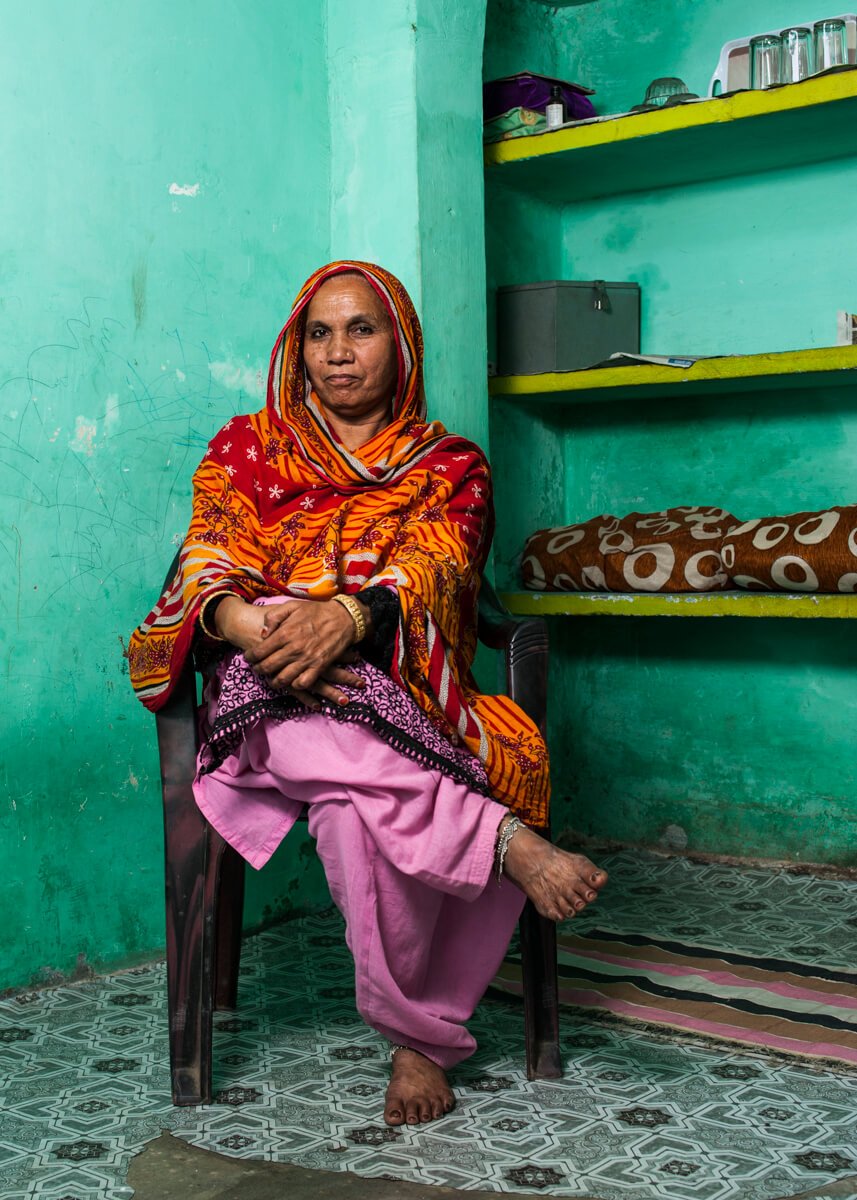
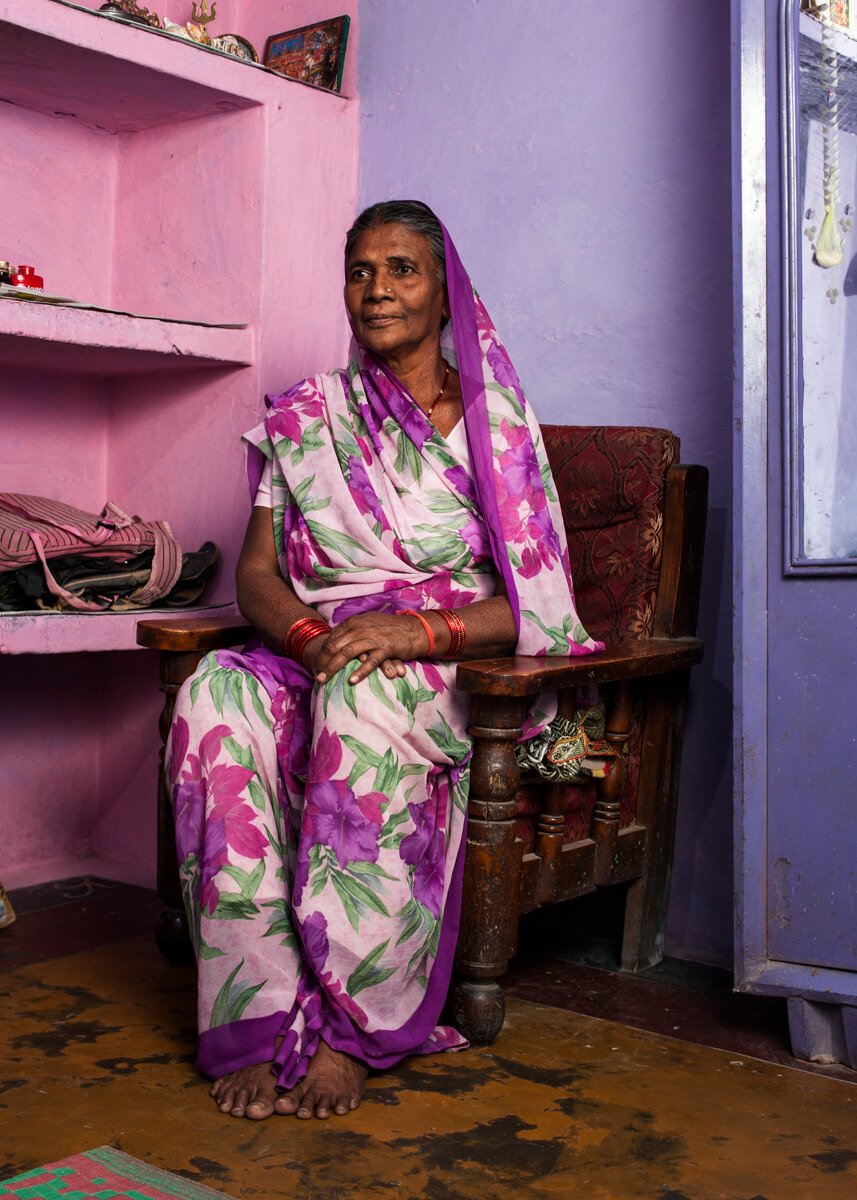
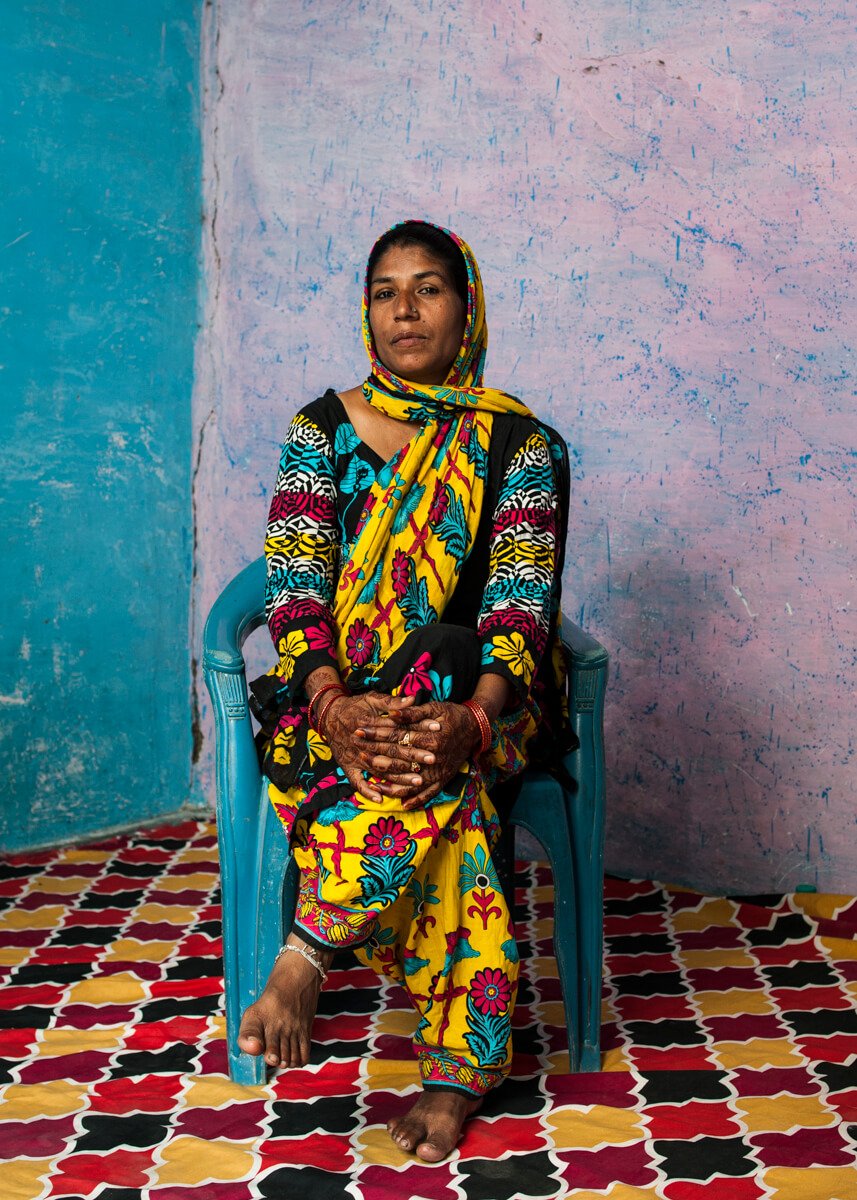
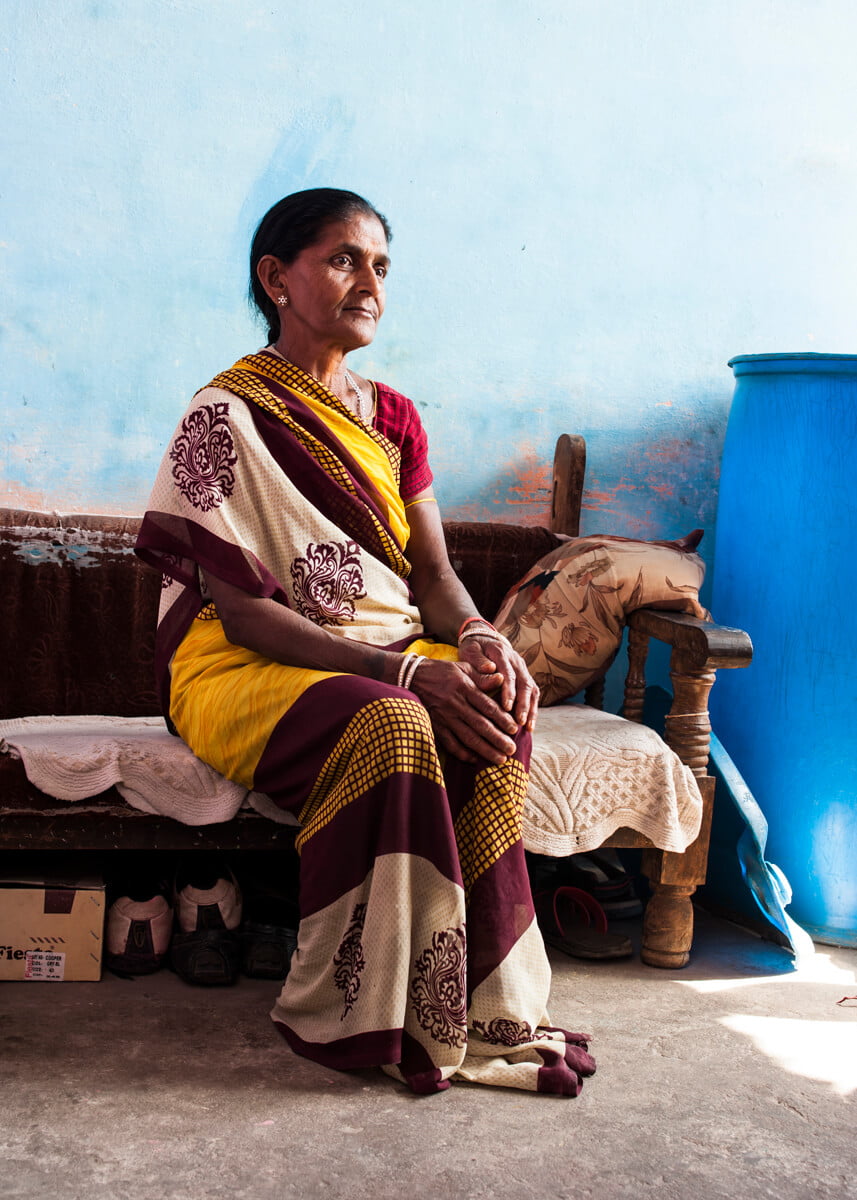
That project described above was funded by Arts Council England. For those of us not familiar with grant funding, can you describe what the application entailed, and the kinds of support you’ve received?
I did manage to secure several rounds of Arts Council England funding to complete this original project, named ‘Bhopal: Facing 30’, with which I produced a book to commemorate the disaster’s thirtieth anniversary. This funding gave me fantastic opportunities I wouldn’t have had without it. I was able to print and exhibit artworks, hold many exhibitions and events in the UK and abroad to engage new audiences with the work and more importantly with the social, humanitarian and environmental issues that surround it, and it was very special to be able to eventually take the exhibition to the Jehangir Art Gallery in Mumbai to engage Indian audiences too. Like I said, many of whom were unaware this is an ongoing and un-remediated disaster. Neither Union Carbide, who owned the factory site in 1984, Dow Chemical, who own it now, nor the Indian Government have properly compensated or cleaned up. I was also able to invite a few of the people I had photographed to join me at this exhibition, so audiences could hear first-hand from the survivors with regards to their struggles and campaign.
This next chapter, from which your winning image is taken, depicts some of the women activist survivors. Was this by design, or have these sub-projects naturally evolved as you’ve immersed yourself in the subject? How did you come to photographing the women activist survivors?
After the India exhibition of ‘Bhopal: Facing 30’ Satinath Sarangi, Managing Trustee of Sambhavna, asked if I would consider returning to take more photographs of what he called the ‘Women Activist Survivors’. He told me endless stories of their fights for justice. How some of them walked hundreds of miles, twice, from Bhopal to Delhi to demand clean drinking water, and only got it after the second time when they also fasted for days outside parliament; how women had protested, been beaten up by police and arrested; how two incredible women came together to raise the funds to set up the Chingari Trust in order to treat the children born and suffering with second and third generation birth-defects; how even the children would rally together to have their voice heard and to campaign for justice – just as Sarita Malivi did when she was around ten years old, pictured here in the image that won the Life Framer Colours award. With many of the men suffering ill health and unable to carry out the laborious work they used to do in order to provide for their families, these women became the backbone of the community. We wanted the world to hear the tales of their hard fought road to justice, and the achievements made along the way, and this is why I returned to Bhopal to take these portraits for a new project, ‘Women Activist Survivors’.
It was by chance that I met Apoorva Dixit, who was in Bhopal in 2018 carrying out some research of her own and had recently interviewed Satinath, so he put us in touch. She has a fascinating story, which I quickly learned about:
“I was born on soil scarred by methyl isocyanate. I was raised by a family that had narrowly escaped being poisoned to death, by a father who had seen people stampeding in the roads and praying to escape an invisible gas. Born in 1995–less than three years after my dad picked up his compensation check from Union Carbide–and in Prabha Nursing home–less than 5 km away from the now permanently closed factory–I had not so much as heard of the 1984 Bhopal Gas Tragedy until I was twelve years old, sitting in a social studies class in a classroom 8000 miles away in Memphis, Tennessee.” – Apoorva Dixit
It was amazing to work with her as she collected the stories of the women, and I took their formal portraits. The women were photographed in all the natural colour and beauty of their humble homes, on the edge of the disaster site, and again I wanted to represent their courage and strength with this series of portraits. Among society, their work can often be over-looked, or seen only as a means for further compensation. These women simply want justice, the site to be cleaned up, for people to have the best access to healthcare, for the perpetrators of the disaster to be prosecuted and for no more Bhopals to happen anywhere else, to anyone else, in the world.
Their stories have never been collated before, and will serve to raise greater awareness of the issues they face and to celebrate the positive changes they have made.
Talk us through how you worked with each of the women, and what you sought to convey. What did you want to express through color?
Colour is everywhere in India, it’s unavoidable. What was important to me is that the women were photographed within their own homes, and wearing their own clothes. Not by design, this resulted in a series of beautifully colourful portraits.
We had been given a list of about thirty Women Activist Survivors to photograph, and had help from some local women from the International Campaign for Justice in Bhopal (ICJB) to reach them. They had been informed of the project in advance. Apoorva generally interviewed them first, as I set up for the portrait, and this gave them some time to become familiar with us and to feel comfortable. I don’t speak Hindi myself, but over the years have learned a few words to be able guide those sitting for portraits. This often made them more at ease, as they were able to laugh at my terrible accent!
I’m very fond of traditional portraits. My great grandmother’s brother was a photographer and had a studio in Genova, Italy, in the 1920s. I’ve inherited some of those photographs. I love studying the postures, the gaze – how sometimes it’s to camera or away, and especially how people hold their hands. Portraits at this time documented people of status and power, a kind of validity. I wanted to represent these women in a similar way, but without a traditional portrait studio or a noble home, the women were often lit and photographed within a very small space which proved difficult, technically.
Essentially, it is their strength and dignity I wanted to portray.
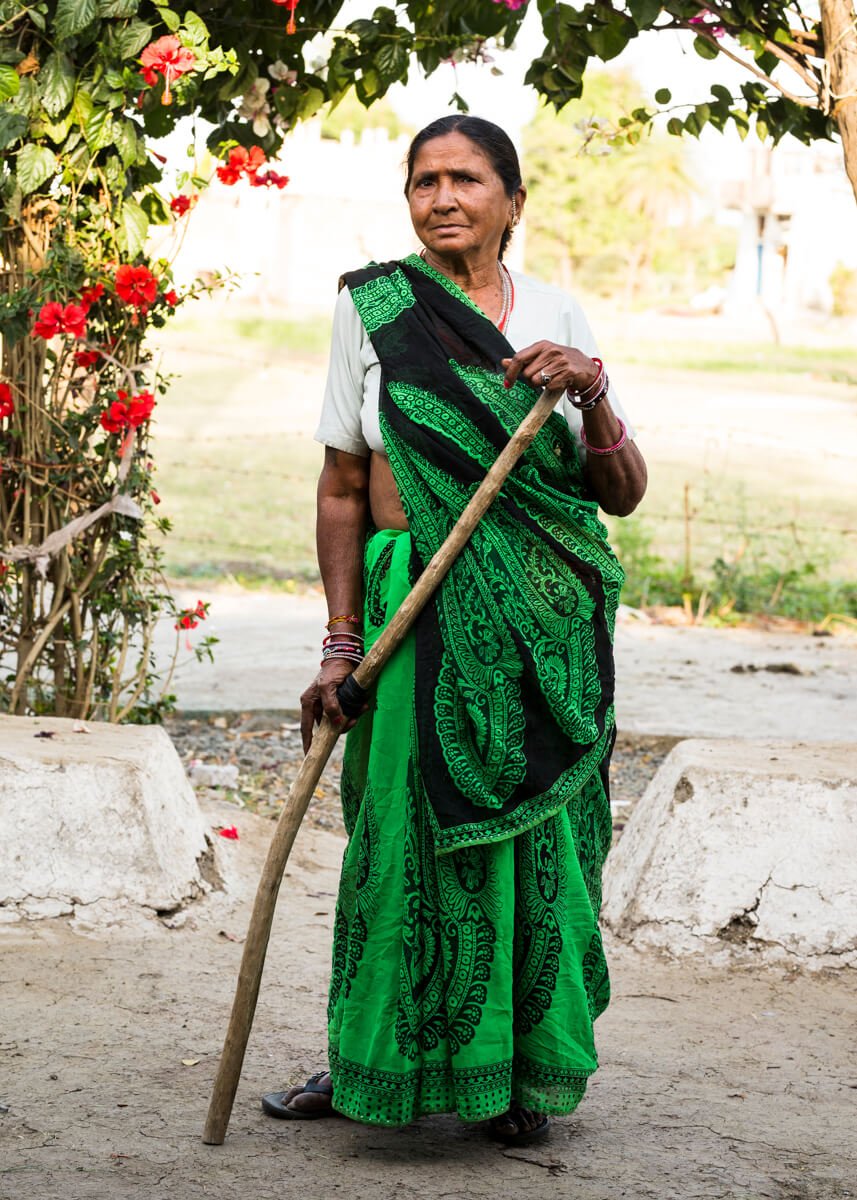
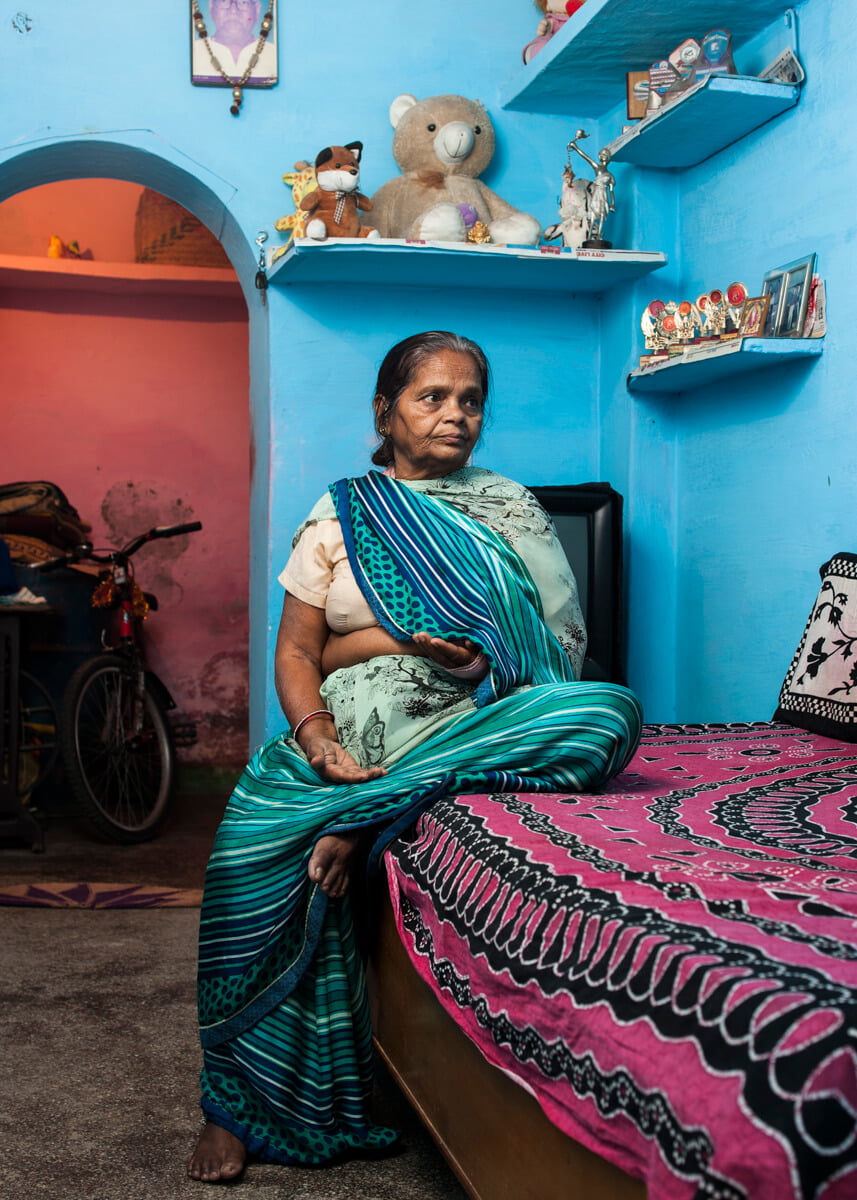
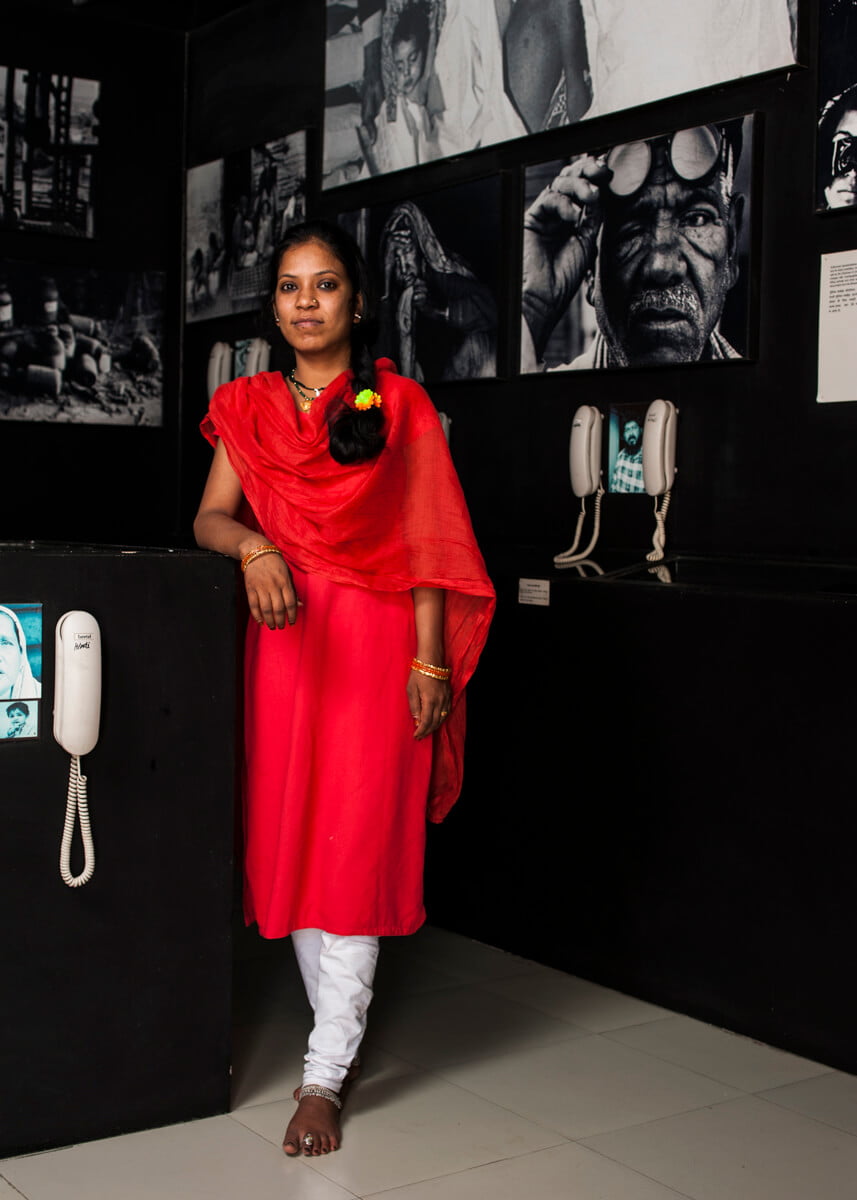
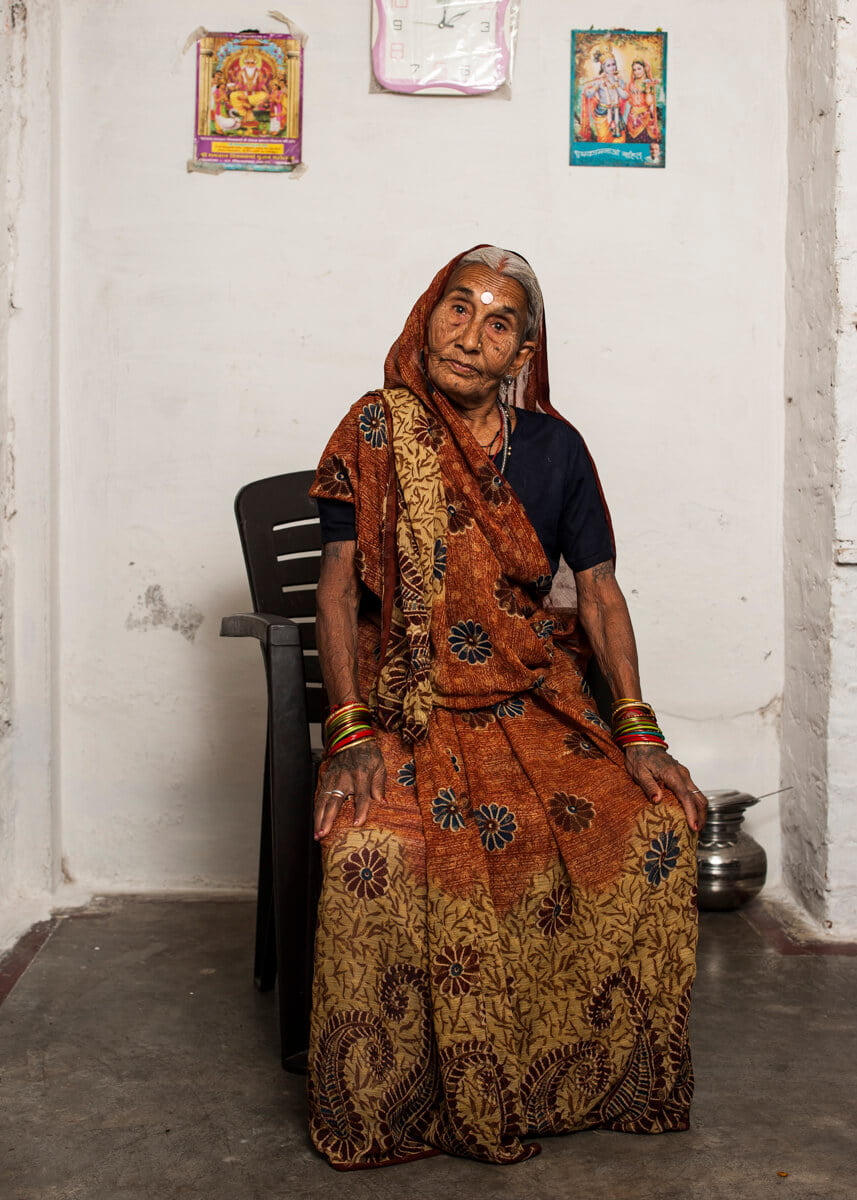
You mention a book in the works. Can you tell us any more about this?
Yes, I love the idea of a physical, tangible, object people will be able to engage in this work with. I plan to use the prize money to return to India in order to support the portraits with a series of documentary images that will then sit with their life stories transcribed and written by anthropologist Apoorva Dixit.
This may involve me returning several times. As you can imagine, the campaign is heightened every anniversary by demonstrations in the streets of Bhopal but, just as importantly, I would also like to focus on their every-day work in the campaign for justice.
35 years after the disaster, and almost 10 years into documenting this subject yourself, what’s your overriding feeling? Do you see the survivors’ search for justice gaining ground, or losing it?
What I find unbelievable is that if this disaster had happened anywhere else, to any other community, there would be public outcry until the problem was resolved. I believe these people have been somewhat overlooked by people of power, who can enforce the change that is needed. The CEO of Union Carbide was wanted for culpable homicide before his death in 2014. Dow Chemical Corporation were able to take over the abandoned factory site by acquiring the assets only, and none of the liabilities, which should have been illegal.
When I first got involved with the campaign for justice in Bhopal I came across a photograph on the homepage of the Bhopal Medical Appeal website. Being a visual person, I had recalled seeing this image in a newspaper when I was growing up. It was that of a man brushing away the dirt on his baby daughters face for one last goodbye before she was buried in December 1984. It turned out this photograph was taken by Magnum photographer Raghu Rai, and was used in a campaign at the launch of the Bhopal Medical Appeal on the disasters’ tenth anniversary. I had recalled seeing it in the newspaper growing up and seeing it again made me upset that the fight was still ongoing.
They have had so many adversities but are, gradually, making greater achievements. I believe keeping this conversation global will help with that, but even from the beginning there were disparities between the way the Union Carbide factory was set up in India, as opposed to how their factories were set up in North America – there’s been a lot of research on this – and it seems, sadly, the disaster was actually inevitable in the first instance.
I believe they will never give up hope, and that they deserve justice, but the words of some of the Women Activist Survivors themselves may better convey this:
“At first, when we used to pump water, we didn’t mind it much. We thought that since it was coming from the pump, that’s why it was dirty and smelled bad. But when we started getting sick and they told us that this water is causing diseases and disabling our children, I met those kids, and then I realised that this water was ruining our generation. Something inside told me that I should join [the movement], because [if] we don’t do anything today, tomorrow someone else will be affected” – Sarita Malivi
“I believe we will have victory only when history remembers our fight. I want our stories printed in books, coming generations will continue the fight by reading and remembering us, they will make sure Bhopals don’t happen again.” – Hazra Bi
And finally, who or what inspires your work? And what’s the best piece of advice you’ve ever had?
These strong women inspire me, their determination and resilience is immeasurable. Environmental issues and social injustices inspire me to create new work. My work stems from interests in people and the environment and draws on my scientific background to portray humanitarian, social and environmental issues. I’ve always believed you should use your camera for good; to document what you love or care about the most, and your passion will be evident in the images.
I’ve had many pieces of advice and words of encouragement over the years with regards to my photography, so it’s hard to pinpoint one of them. How about entering photography competitions, would that count? I think it was Brigitte Lardinois (formerly of Magnum Photos) who once saw one of my Bhopal: Facing 30 portraits that had been shortlisted to the final 200 of the Taylor Wessing Portrait Prize and told me to always keep entering photography competitions as it will get your work in front of important people in the industry. It was after seeing Life Framer’s prestigious list of judges that I decided to enter, so it’s definitely this piece of advice that resonates with me most at the moment.
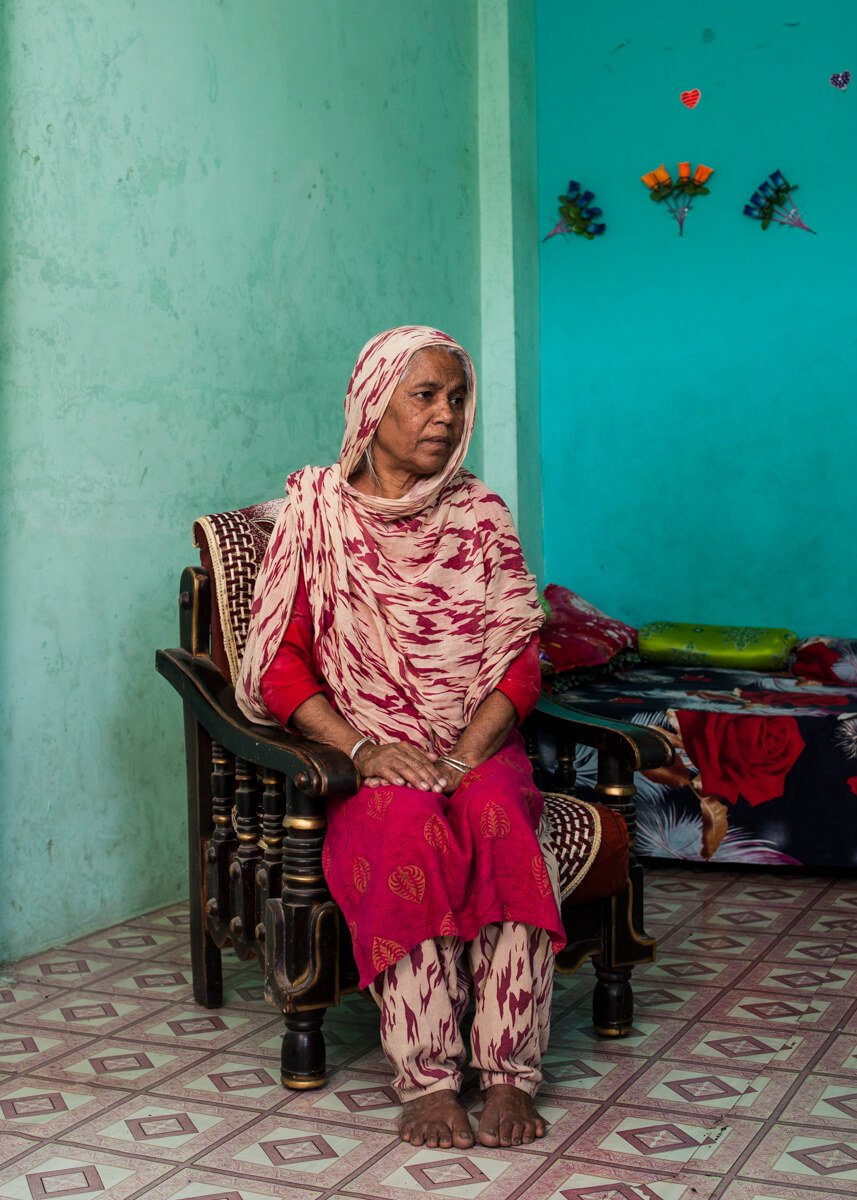
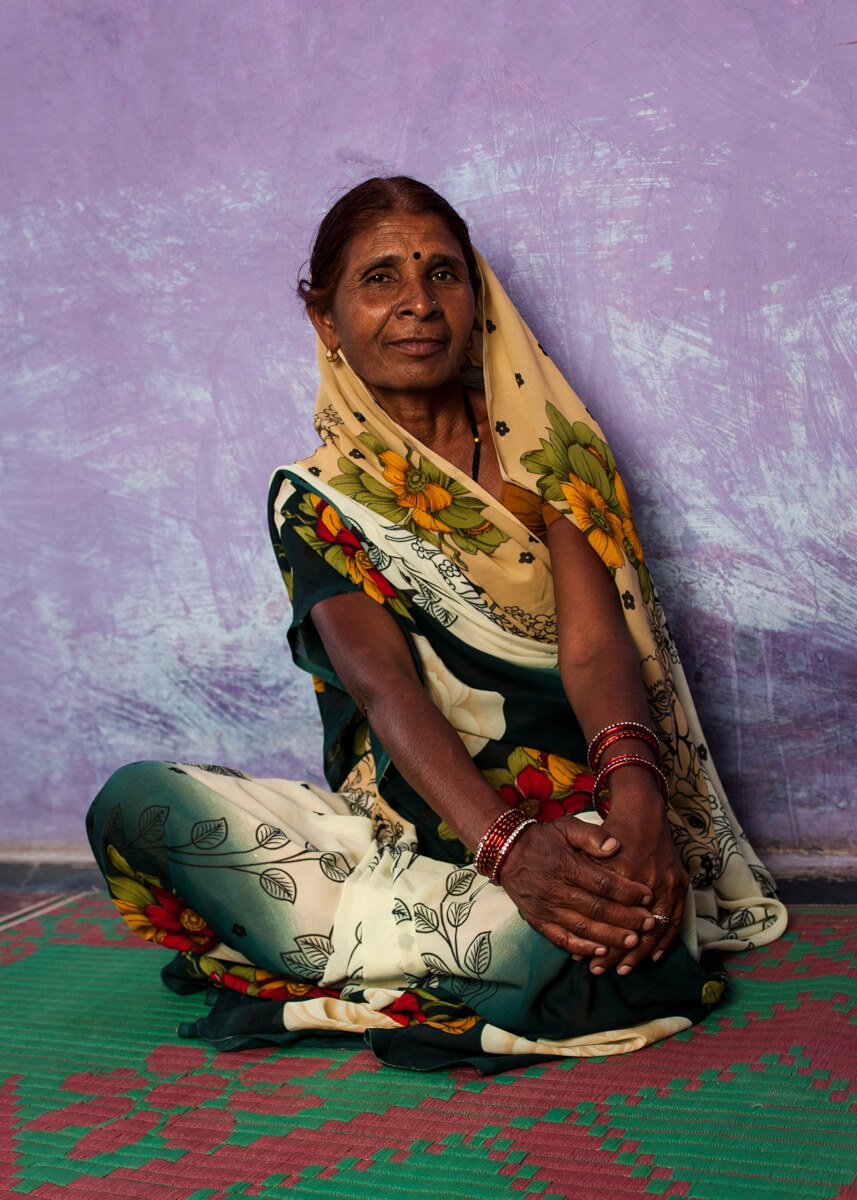
All images © Francesca Moore
See more at www.francescamoore.co.uk and follow her on Instagram: @franmoorephoto
Find out more about the Bhopal: Facing 30 project at www.bhopalfacing30.wordpress.com
